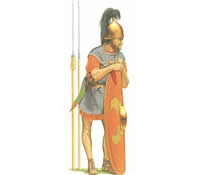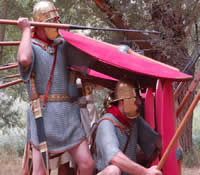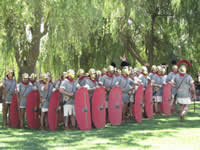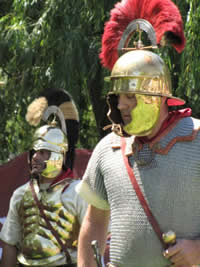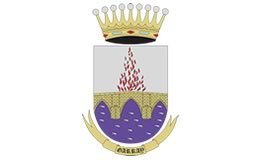Since 146 BC. Rome destroyed the city of Corinth and Carthage the outward politics of Rome is centred on Hispania with two long and difficult wars, the unprising of Lusitanians at the head of Viriathus and on the other hand the politics that remained Numantia city from 143 BC was the most powerful of Arevaci, in Apianus opinion, that was set up in the High Duero as exclusive protagonist of Indigenous resistance till its destruction in the year 133 BC. by the consul Scipio Aemilianus. This phase of the war was called Bellum Numantinum by Roman historians, for the primacy of the Arevaci city in its confrontations with the Roman Republic that brake sharply during ten years the unstoppable Roman expansion in the Iberian Peninsula, till this moment.
Diodorus Siculus, Apianus and in particular Polibius, eyewitness of facts since accompanied to Scipio in this final expedition against Numantia, qualified the confrontations against the Celtiberians as “fire war” as for the violence of confrontations as for its duration as unlike wars against Greeks and Carthaginensis that made few battles, in the Celtiberian war the fighters broke out with violence when they believed wiped out (Polibio, XXXV, 1,2).
The cost of this war is reflected in the numbers cited by different sources; the Roman discharges add up to 60,000 and 80,000 lives, without considering the losses in little skirmishes. The comparison is clear since the maximum number of warriors that get together the Numantians is from about 8,000 to 10,000 at the most, in the beginning of war and of 4,000 in the end; all these successes brought Numantia to be defined by Cicero as “The terror of Republic” expression that was generalized from this moment.


